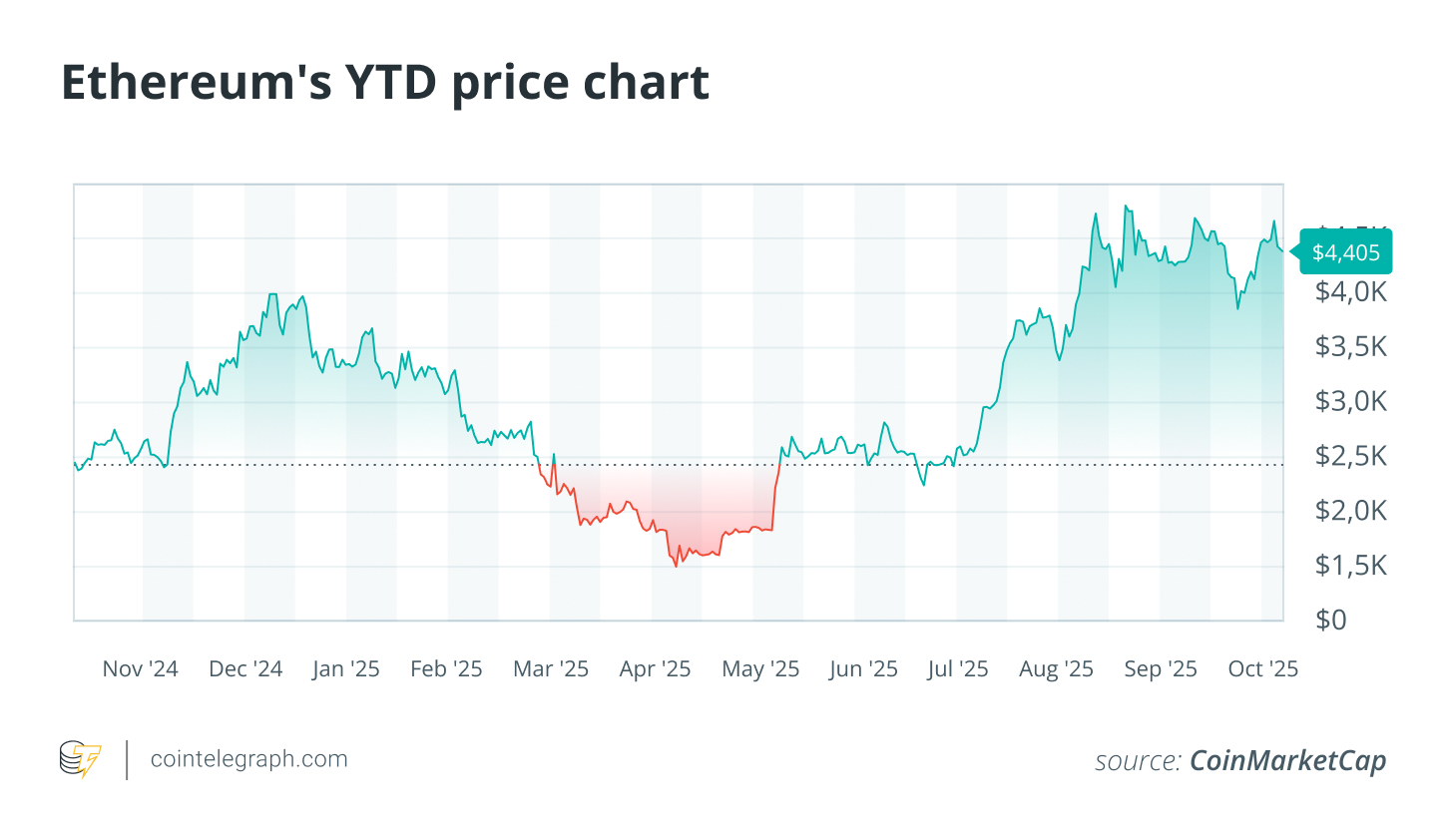
What If Ethereum Surges to $100,000?
What does ETH at $100,000 look like?
If ETH reaches $100,000, Ethereum could evolve into a multitrillion-dollar economy, leading to substantial consequences.
With a current circulating supply of 121.1 million ETH, a price of $100,000 would bring its market valuation to approximately $12.1 trillion—around 3.2 times the market cap of Apple and nearly 44% of the total estimated value of gold.
Assuming about 36 million ETH (or 29.5% of the supply) remains staked, that would represent $3.6 trillion in locked capital. At such a scale, every metric would be intensified: from security funding via staking rewards to the effects on the US dollar through fees and the collateral underpinning decentralized finance (DeFi) and exchange-traded funds (ETFs).
This article discusses the plausibility of ETH achieving the $100,000 mark and what an economy of that magnitude may entail in practical terms.
 Main Image
Main Image
What Could Drive ETH to $100,000?
Achieving a six-figure ETH price likely needs multiple strong catalysts working together.
- Consistent institutional demand: Spot ETH funds are demonstrating the capability to attract significant investments. If more diversified portfolios from crypto firms, pensions, and wealth managers enter the market, it could create a steady demand.
- On-chain dollars in significant amounts: Stablecoins are hovering near records at roughly $300 billion, and tokenized US Treasury bill investments have shifted from testing phases to actual collateral. Numerous products are currently operational and facilitating daily transactions on Ethereum and its auxiliary systems.
- Effective scaling methods that maintain low costs will allow ETH to continue to benefit from the value it accrues. The recent Dencun upgrade has reduced costs associated with rollups, allowing for economical L2 transactions while still centralizing significant activities on Ethereum.
- Mechanics of scarcity: With a notable portion of ETH staked, the available supply continues to shrink. This tightening means that sustained fee burning further reduces the tradable funds, creating a cycle that feeds back into demand.
- Macro-economic variables and general market expectations: Most forecasts currently suggest figures far below $100,000 for the next few years, suggesting that multiple concurrent favorable conditions are necessary for ETH to achieve such a valuation.
Ultimately, a singular upgrade or temporary price manipulation won’t suffice for Ethereum. Continuous market trends must align with inflows from ETFs and a growing reliance on stablecoins.
Economics of ETH at $100,000
At such a valuation, even minor changes in protocol conditions can lead to immense dollar inflows.
Ethereum’s proof-of-stake structure ties the issuance of Ethereum directly to the amount securing the network, changing the reward metrics and creating a sustainable security environment without rampant inflation. At the $100,000 mark, the total value of security budgets becomes vastly significant.
For instance:
- 100,000 ETH issued annually would lead to $10 billion
- 300,000 ETH would translate to $30 billion
- 1 million ETH would amount to $100 billion.
As interest in on-chain activities increases, revenues expand, potentially attracting even more validators to the ecosystem. This increased activity could sharpen supply versus burn rates, impacting liquidity.
Ensuring Usability at $100,000
Users will only continue to engage with Ethereum at six figures if everyday transactions remain cost-effective and the network consistently captures value.
As Ethereum approaches this valuation, transaction fees could spike significantly, especially on L1. This is where the Dencun upgrade offers a release mechanism: rollups can efficiently manage data at lower costs, ensuring that standard transactions remain affordable.
While high fees may dampen enthusiasm, the Ethereum ecosystem’s capacity to consume and burn ETH will be essential for maintaining its value.
Sources of Capital Flow: ETFs, DeFi, and Stablecoins
When Ethereum hits $100,000, the nature and method of buying will be crucial for defining its market structure.
- ETFs provide the underlying demand: Spot funds transform conventional investments into consistent activity rather than sporadic spikes.
- DeFi dynamics: As prices rise, collateral values escalate, increasing loan potential and revenues generated through transaction fees.
- Utilization of stablecoins: Essential for daily on-chain payments, the availability of stablecoins continues to bolster liquidity within Ethereum’s ecosystem.
Together, these components create a sustainable framework for supporting a six-figure ETH value.
Risks to a $100,000 Valuation
Higher valuations can trigger volatility, regulatory challenges, and operational vulnerabilities.
- Increased volatility and liquidations: With growth comes an amplified risk of liquidation cascading across platforms.
- Regulatory focus: Heightened scrutiny on various aspects of crypto trading could significantly impact transactions.
- Centralization concerns: The risk escalates when a small number of validators hold concentrated power in the system.
- Ensuring a cohesive user experience as daily transactions shift toward L2 while L1 is preserved for more substantial transactions.
Fostering a thriving Ethereum ecosystem that supports a $100,000 valuation hinges on healthy risk management, diverse validators, and stable growth indicators.



